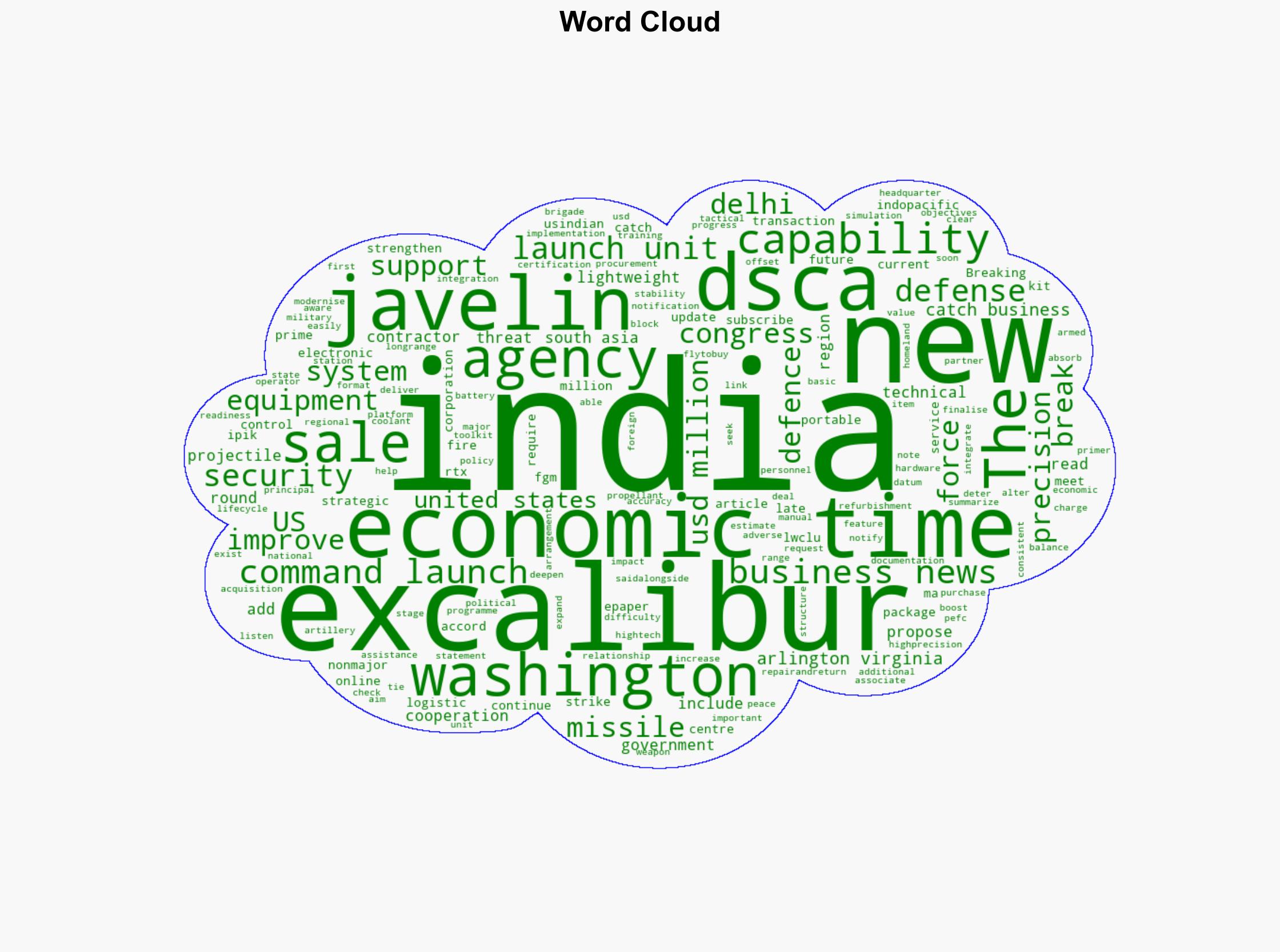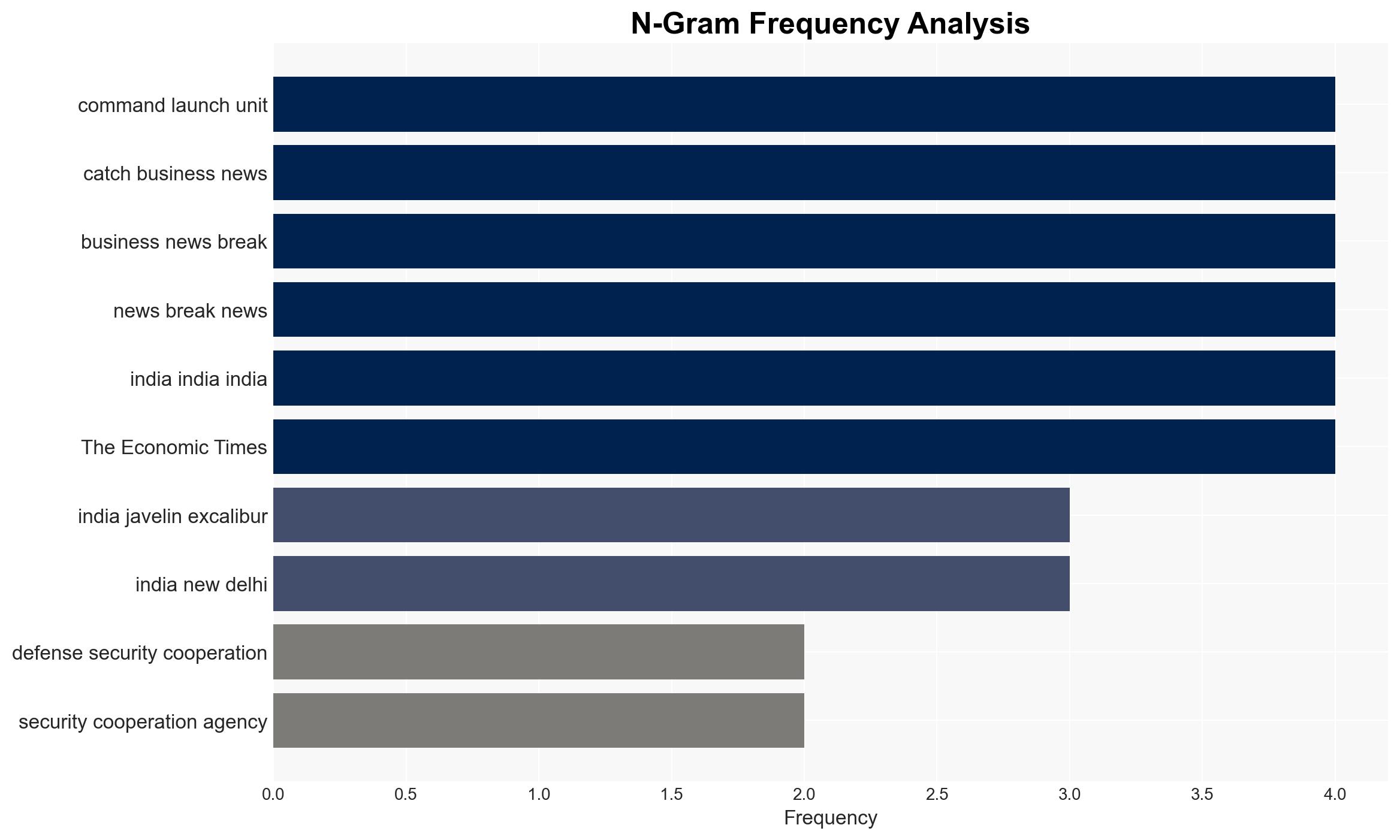US approves sale of Excalibur Projectiles Javelin Missile Systems worth 93 million to India – The Times of India
Published on: 2025-11-20
AI-powered OSINT brief from verified open sources. Automated NLP signal extraction with human verification. See our Methodology and Why WorldWideWatchers.
Intelligence Report:
1. BLUF (Bottom Line Up Front)
The approval of the sale of Excalibur projectiles and Javelin missile systems to India is likely a strategic move by the United States to bolster India’s defense capabilities and strengthen bilateral relations, particularly in the Indo-Pacific region. This action aligns with U.S. interests in countering regional threats, notably from China. Confidence Level: Moderate. Recommended action includes monitoring regional responses and preparing for potential diplomatic engagements with neighboring countries.
2. Competing Hypotheses
Hypothesis 1: The sale is primarily intended to enhance U.S.-India strategic ties and support India’s defense modernization, aligning with U.S. interests in maintaining a balance of power in the Indo-Pacific region.
Hypothesis 2: The sale is a commercial transaction driven by defense industry interests, with strategic implications being secondary.
Hypothesis 1 is more likely given the explicit mention of strategic objectives in the DSCA statement and the geopolitical context of increasing Chinese influence in the region.
3. Key Assumptions and Red Flags
Assumptions: The U.S. and India share aligned strategic interests in the Indo-Pacific. India has the capability to integrate these systems effectively into its military structure.
Red Flags: Potential overestimation of India’s ability to absorb and effectively utilize the new systems. Possible underestimation of regional reactions, particularly from China and Pakistan.
Deception Indicators: Lack of transparency in the offset deals and final contractual arrangements could indicate undisclosed strategic motives.
4. Implications and Strategic Risks
The sale could escalate regional tensions, particularly with China and Pakistan, who may perceive this as a threat to their security. This could lead to an arms race or increased military posturing in the region. Additionally, there is a risk of cyber espionage targeting the new systems, potentially compromising their effectiveness.
5. Recommendations and Outlook
- Monitor regional diplomatic communications for signs of tension escalation.
- Engage in dialogue with China and Pakistan to mitigate potential misunderstandings.
- Provide technical support to India to ensure effective integration of the systems.
- Best-case scenario: Strengthened U.S.-India relations and enhanced regional stability.
- Worst-case scenario: Heightened regional tensions leading to military confrontations.
- Most-likely scenario: Gradual integration of systems with minor regional diplomatic challenges.
6. Key Individuals and Entities
RTX Corporation (Principal contractor), Defense Security Cooperation Agency (DSCA), U.S. Congress (Approving body)
7. Thematic Tags
National Security Threats, Indo-Pacific Strategy, U.S.-India Relations, Defense Modernization
Structured Analytic Techniques Applied
- Cognitive Bias Stress Test: Expose and correct potential biases in assessments through red-teaming and structured challenge.
- Bayesian Scenario Modeling: Use probabilistic forecasting for conflict trajectories or escalation likelihood.
- Network Influence Mapping: Map relationships between state and non-state actors for impact estimation.
Explore more:
National Security Threats Briefs ·
Daily Summary ·
Support us





